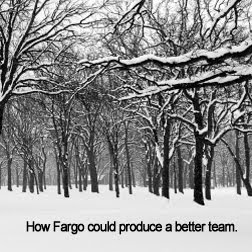
“Innovation distinguishes between a leader and a follower.” — Steve Jobs.
Simply stated, in business, innovation is an idea that translates into a good or service that people value en masse. It does not have to be a new idea. In fact, the original Latin word meant to renew or change the values onto which a system is based.
Businessweek semi-understood the concept when it listed the 20 most important inventions for the next 10 years. It only semi-undersood the concept because many of the inventions exist, but most of them have yet to be innovations.
Innovation is the most sought after and neglected business asset.
When the McKinsey Global Survey asked corporate leaders how important innovation was to their businesses, 70 percent said that it was among their top three priorities for driving growth. However, most companies did not understand how to arrive at it; many of them even said they hinder it.
In the survey, an equal number of leaders felt their corporate culture inhibited innovation or that they didn't have the right people in place to innovate. But as far apart as those answers seem, they could be the same answer.
Whatever culture they have in place is neither attracting nor stimulating imagination and creativity in the workplace. And it is both of these individual traits that eventually lead to innovation.
“Innovation is not the product of logical thought, even though the final product is tied to a logical structure.” — Albert Einstein
Simply put, imagination is the ability to be able to conjure images and thoughts in the mind. Creativity is the ability to find effective ways to share the thought with others.
Where some companies fall short is most performance measures aren't concerned with either. And, for many measures of professional success, such as a comfortable lifestyle, imagination and creativity aren't critical either.
In fact, Joana Johnson once pointed out that only 10 percent of highly creative people are suburban-living, comfortably middle class. That is not to say however, as she does, that the middle class cannot be creative. Rather, the middle class has very little incentive to be creative.
The challenge may even be ingrained in the national psyche.
 I had an interesting side discussion with Carl Sorvino about the human potential for creativity recently. He said he had three children, and could tell before their first birthday which would be and are more creative.
I had an interesting side discussion with Carl Sorvino about the human potential for creativity recently. He said he had three children, and could tell before their first birthday which would be and are more creative.It seems to me that Sorvino's thinking is the essence of what hinders creativity today, twice over. Managers have a tendency to scale the creative assets of their employees, never realizing all of them have the potential under certain circumstances. And, employees tend to scale their own sense of creativity, with most under the delusion that they aren't very creative at all.
I tend to disagree that people are innately not creative, but mostly because I've had the benefit of facilitating several dozen core message sessions that often include a cross section of employees, ranging from receptionists to chief executive officers.
As long as those employees are encouraged to state their ideas, without fear of failure, almost all of them contribute something. In fact, some of the most imaginative answers are from people who often preface them, saying they aren't creative whatsoever. Also interesting is that, for little more than the promise of making their company better, every contribution propels the group to be more creative, even if the group might otherwise classify themselves as noncreative individuals.
Of course, this is only a short-term phenomenon. It takes time to create an innovative corporate culture, mostly because people lean toward complacency. They learn it early on as one of the easiest paths to comfortability.
Manifesting creativity and innovation in the workplace.
Meanwhile, companies that want to become innovative do everything they can to disrupt complacency by adopting different principles, Kaizen among them. If you are unfamiliar with the term, Kaizen means "change for the better" in Japanese.
It refers to the philosophy or practices that focus upon continuous improvement of processes. But the discipline hardly matters. It has been applied to manufacturing, engineering, and management. Simply stated, it is the true definition of innovation.
It is also the foundation of a weekly chat session hosted by Ellen St. George Godfrey. From the session and our own research, it seems that innovation needs to become a priority at every level of a company before it begins to take hold.
• Leadership generally sets the vision and mission of a company. They prioritize innovation.
• Management directly influences corporate culture. It's up to them to incentivize creativity.
• Supervisors are closest to the employees. It's up to them to identify talent and encourage ideas.
• Employees possess practical knowledge. It's up to them to discover new ways to excel.
In such an environment, where creativity is encouraged and time allocated to enhance it, anyone can be more creative in the workplace. No, that doesn't mean that every employee will necessarily become a creative genius within their section. But it would disrupt the belief that complacency leads to comfortability. Instead, it might lead toward the exit.




































